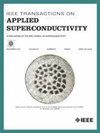Design and Investigation of a New Torque-Enhanced Flux Modulated Permanent Magnet Arc Motor With Flux-Concentrated Stator PMs
IF 1.7
3区 物理与天体物理
Q3 ENGINEERING, ELECTRICAL & ELECTRONIC
引用次数: 0
Abstract
This article proposes an innovative flux modulated permanent magnet (PM) arc motor enhanced with flux-concentrated stator PMs (FCS-FMPMAM). With the primary goal of increasing the average torque output, the FCS-FMPMAM incorporates a set of flux-focused stator PMs. This article initially introduces the configuration and performance of the FCS-FMPMAM. The combination of the flux-switching PMs, consequent-pole PMs and PMs in the stator yoke is beneficial to generate abundant harmonics and bolster the triple flux-modulation effect. Then, the optimal rotor pole number of the proposed machine is analyzed and selected. The sensitivity analysis is performed on the design parameters of FCS-FMPMAM for the consequent optimization of the torque performance of FCS-FMPMAM. This facilitates the subsequent torque performance optimization of FSC-FMPMAM. Based on the multi-objective evolutionary algorithm, the torque capabilities of FCS-FMPMAM are optimized to obtain the maximized average torque output and the minimized torque ripple. The optimized machine is analyzed under different PM excitation conditions to reveal the superiority of the proposed PM arrangement. Finally, the proposed machine is compared with an existing flux-modulated stator-PM arc motor in electromagnetic performances with finite element analysis method to exhibit the superiority of FCS-FMPMAM.带磁通集中定子永磁发电机的新型扭矩增强型磁通调制永磁弧形电机的设计与研究
本文提出了一种创新的磁通调制永磁(PM)弧形电机,该电机采用磁通集中定子永磁(FCS-FMPMAM)。为了提高平均扭矩输出,FCS-FMPMAM 采用了一组磁通集中定子永磁发电机。本文首先介绍了 FCS-FMPMAM 的配置和性能。磁通开关永磁发电机、随极永磁发电机和定子磁轭永磁发电机的组合有利于产生丰富的谐波并增强三重磁通调制效应。然后,分析并选择了拟议机器的最佳转子极数。对 FCS-FMPMAM 的设计参数进行灵敏度分析,从而优化 FCS-FMPMAM 的转矩性能。这有助于后续的 FSC-FMPMAM 扭矩性能优化。基于多目标进化算法,对 FCS-FMPMAM 的扭矩性能进行了优化,以获得最大的平均扭矩输出和最小的扭矩纹波。在不同的永磁励磁条件下对优化后的机器进行分析,以揭示拟议永磁布置的优越性。最后,利用有限元分析方法将所提出的机器与现有的磁通调制定子-PM 电弧电机的电磁性能进行比较,以显示 FCS-FMPMAM 的优越性。
本文章由计算机程序翻译,如有差异,请以英文原文为准。
求助全文
约1分钟内获得全文
求助全文
来源期刊

IEEE Transactions on Applied Superconductivity
工程技术-工程:电子与电气
CiteScore
3.50
自引率
33.30%
发文量
650
审稿时长
2.3 months
期刊介绍:
IEEE Transactions on Applied Superconductivity (TAS) contains articles on the applications of superconductivity and other relevant technology. Electronic applications include analog and digital circuits employing thin films and active devices such as Josephson junctions. Large scale applications include magnets for power applications such as motors and generators, for magnetic resonance, for accelerators, and cable applications such as power transmission.
 求助内容:
求助内容: 应助结果提醒方式:
应助结果提醒方式:


